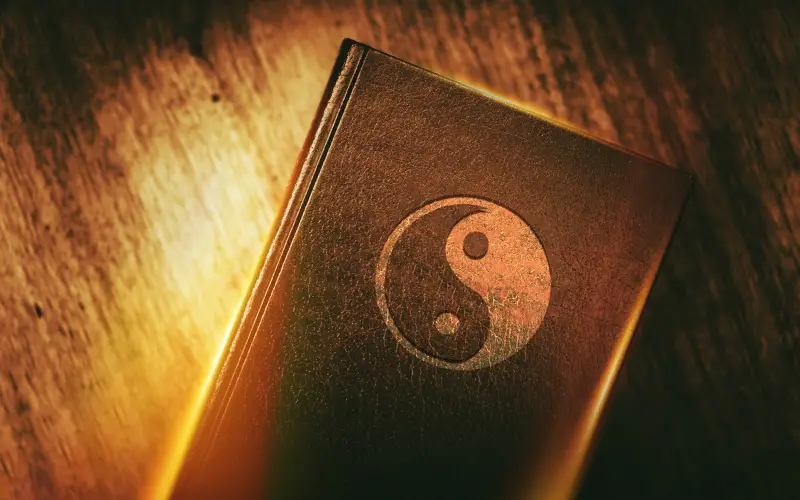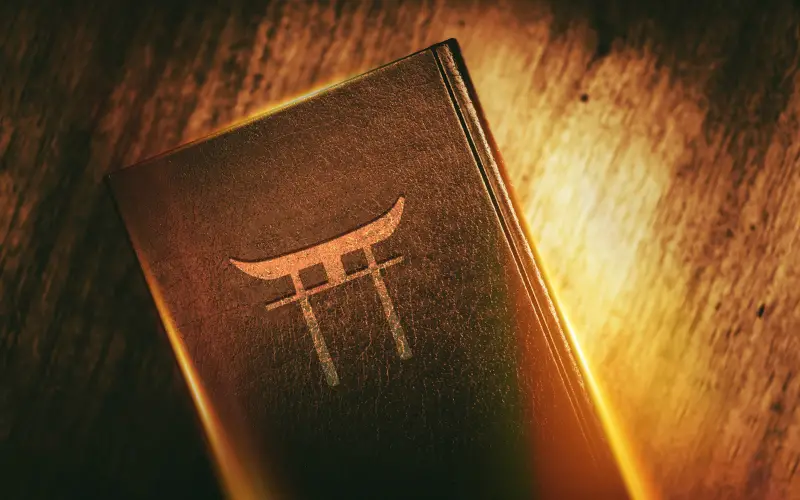
Welcome to an exploration of the spiritual and philosophical bedrocks of diverse cultures around the globe. Religion, an intrinsic part of human society, often finds its essence and wisdom encapsulated in sacred texts. These revered writings, ranging from ancient scrolls to profound scriptures, embody the core beliefs and teachings of different faiths. In this journey through faith and literature, we delve into the eight major sacred texts that have profoundly shaped religious beliefs and practices worldwide. From the Bible to the Qur’an, the Vedas to the Tao Te Ching, each holds a unique place in the hearts and minds of millions, offering insights into the beliefs, rituals, and moral foundations of the religions that revere them. Join us as we unravel the spiritual tapestry woven by the 8 Major Sacred Religious Texts of the World.
The List of the 8 Major Sacred Religious Texts of the World
8. The Torah
Judaism

Followers: 14.7 million
Cultural Tradition: Abrahamic religions
Founded: Middle East
Judaism, one of the world’s oldest monotheistic religions, is deeply rooted in the teachings and traditions outlined in the Torah. The Torah, the central and most sacred text of Judaism, consists of the first five books of the Hebrew Bible: Genesis, Exodus, Leviticus, Numbers, and Deuteronomy. It is considered the divine revelation given by God to Moses on Mount Sinai.
Genesis provides the foundational account of creation and the patriarchs, Exodus recounts the Israelites’ liberation from Egypt, Leviticus presents laws and rituals, Numbers details the Israelites’ wanderings, and Deuteronomy revisits and reinforces the laws before the Israelites’ entry into the Promised Land. The Torah serves as the guide for Jewish laws, ethics, rituals, and beliefs, shaping Jewish identity and practice throughout history. The study and interpretation of the Torah are fundamental to Jewish religious life, reflecting the covenant between God and the Jewish people and providing a moral and spiritual compass for Jewish communities around the world.
7. The Guru Granth Sahib
Sikhism

Followers: 25-30 million
Cultural Tradition: Indian religions
Founded: India
Sikhism is a monotheistic religion founded in the Punjab region of India in the 15th century. At its core lies the belief in one God and the teachings of Guru Nanak and nine successive Gurus who emphasized equality, service, and devotion. The Guru Granth Sahib, the holy scripture of Sikhism, is a central and revered element of the religion.
It is a compilation of hymns and writings by Sikh Gurus and other saints, encompassing spiritual, philosophical, and practical guidance. Sikhs consider the Guru Granth Sahib as their eternal living Guru, the spiritual light to guide their lives. It offers insights into a meaningful and righteous life, encouraging Sikhs to engage in selfless service, promote justice, and seek God through devotion and righteous actions. The Guru Granth Sahib stands as a beacon of wisdom, unity, and inspiration for the Sikh community, transcending geographical and cultural boundaries.
6. The Tao Te Ching
Taoism

Followers: 12-173 million
Cultural Tradition: Chinese religions
Founded: China
Taoism is an ancient Chinese philosophical and spiritual tradition that emphasizes living in harmony with the Tao, which is often translated as the Way. The origins of Taoism can be traced back to ancient texts, particularly the “Tao Te Ching,” attributed to the sage Laozi. This foundational text, written around the 6th century BCE, offers profound insights into the principles of Taoism.
The “Tao Te Ching” advocates for a natural, simple, and balanced way of life, aligning with the flow of the Tao. The Tao is the fundamental principle that underlies everything in the universe, and it encourages individuals to live authentically and in tune with the natural order. Taoism promotes humility, non-action, and a deep respect for the interconnectedness of all things. The “Tao Te Ching” guides individuals on how to attain inner peace, wisdom, and a harmonious existence by following the Tao’s principles. It has had a significant impact on Chinese culture and philosophy, influencing a wide range of disciplines from martial arts to traditional medicine.
Read More Fun Facts
Learn more fun facts with Trivia Mastermind content.
5. The Kojiki
Shinto

Followers: 100 million
Cultural Tradition: Japanese religions
Founded: Japan
Shinto, the indigenous belief system of Japan, is deeply rooted in the reverence of kami, which can be spirits, deities, or forces of nature. It emphasizes the interconnectedness of humans with nature and the spiritual world. One of the fundamental texts in Shinto is the “Kojiki,” often translated as “Records of Ancient Matters.” It is a historical and mythological account of Japan’s origins, documenting its creation, divine beings, and early history.
Compiled in the early 8th century CE, the “Kojiki” outlines the mythology and cosmology central to Shinto beliefs. The text narrates the divine origins of the Japanese archipelago, the descent of the gods, and the lineage of the imperial family. It provides crucial insights into the spiritual and cultural foundations of Shinto, reinforcing the veneration of kami and the interconnectedness of the Japanese people with their land and ancestral origins. The “Kojiki” remains a fundamental and revered text in understanding the essence of Shinto spirituality and beliefs.
4. The Tripitaka
Buddhism

Followers: .5 billion
Cultural Tradition: Indian religions
Founded: India
Buddhism, a major world religion, originated in ancient India and was founded by Siddhartha Gautama, also known as the Buddha. It is based on his teachings and insights into the nature of suffering, the path to enlightenment, and the alleviation of human suffering. The Tripitaka, also known as the Pali Canon, is the traditional term for the Buddhist scriptures and is considered the most authoritative collection of Buddhist scriptures in Theravada Buddhism.
It’s divided into three ‘baskets’: the Vinaya Pitaka (rules for monastic discipline), the Sutta Pitaka (discourses of the Buddha), and the Abhidhamma Pitaka (philosophical and doctrinal analysis). These texts contain the teachings of the Buddha, covering ethics, philosophy, meditation, and more. The Tripitaka is highly revered in Buddhism and is pivotal in understanding the core beliefs, practices, and principles of Buddhism, making it a central and sacred text for Buddhists worldwide.
3. The Veda
Hinduism

Followers: 1.2 billion
Cultural Tradition: Indian religions
Founded: India
Hinduism, one of the world’s oldest religions, is a complex and diverse belief system that has evolved over thousands of years. It encompasses a wide range of beliefs, practices, rituals, and philosophies. The Vedas are the oldest and most authoritative scriptures of Hinduism, forming the foundational texts of this ancient religion. The word “Veda” is derived from Sanskrit and translates to “knowledge” or “wisdom.”
The Vedas are a vast collection of sacred hymns, prayers, rituals, and philosophical teachings written in ancient Sanskrit. They are divided into four main collections: Rigveda, Samaveda, Yajurveda, and Atharvaveda. Each Veda is further divided into four parts: Samhitas (hymns), Brahmanas (rituals), Aranyakas (meditations), and Upanishads (philosophical treatises). The Vedas cover a wide range of topics, including rituals, ceremonies, prayers, cosmology, philosophy, and ethics. They are central to Hindu beliefs and practices, serving as a source of spiritual guidance, moral principles, and religious rituals. The Vedas are considered the divine revelations received by ancient sages and are revered as timeless and infallible scriptures in Hinduism. Their influence permeates Hindu thought, shaping the cultural, spiritual, and philosophical foundations of Hindu civilization for millennia.
Play Trivia!
Challenge yourself and play trivia questions with answers and explanations.
2. The Qur’an
Islam

Followers: 1.9 billion
Cultural Tradition: Abrahamic religions
Founded: Middle East
Islam, the world’s second-largest religion, is based on the teachings and beliefs outlined in the Qur’an, its central and most sacred text. The Qur’an, often referred to as the “Word of God” or the “Final Revelation,” is believed by Muslims to be the literal word of God as revealed to Prophet Muhammad over a period of approximately 23 years. It was revealed in the Arabic language and is revered for its eloquence, guidance, and depth of spiritual insight.
The Qur’an is divided into 114 chapters, known as Surahs, each varying in length, with a total of approximately 6,236 verses, or Ayahs. The content of the Qur’an covers various aspects of human life, including theology, morality, guidance for personal conduct, social principles, legal injunctions, and eschatology. It emphasizes the oneness of God (Allah), the importance of compassion, justice, and the afterlife. Muslims believe that the Qur’an provides the complete and final revelation from God, reaffirming and completing the teachings of previous Abrahamic religions. It is central to the faith and practice of Islam, serving as a guide for Muslims in matters of faith and practice. The recitation of the Qur’an, in its original Arabic, holds great spiritual significance, and its verses are memorized and revered by Muslims around the world. The Qur’an continues to be a source of inspiration, reflection, and spiritual growth for over a billion Muslims globally.
1. The Holy Bible
Christianity

Followers: 2.4 billion
Cultural Tradition: Abrahamic religions
Founded: Middle East
Christianity, one of the world’s major religions, is grounded in the teachings and scriptures of the Bible. The Bible, a sacred and foundational text for Christians, is a collection of ancient writings that include various literary forms such as narratives, poetry, letters, and prophecies. It is divided into two main sections: the Old Testament and the New Testament.
The Old Testament, also recognized by Judaism as their scriptures, contains texts that were written before the life of Jesus Christ. It comprises books like Genesis, Exodus, Psalms, and Isaiah. These texts contain historical accounts, laws, prophecies, poetry, and the religious beliefs of ancient Israel.
The New Testament contains writings primarily focused on the life, teachings, death, and resurrection of Jesus Christ. It includes the four Gospels—Matthew, Mark, Luke, and John—as well as the Acts of the Apostles, the Epistles (letters) written by early Christian leaders like Paul, Peter, and John, and the Book of Revelation.
The Bible is viewed by Christians as divinely inspired and the authoritative word of God, providing guidance on faith, morality, and the purpose of life. The foundational Christian beliefs, including the belief in the Holy Trinity (Father, Son, and Holy Spirit) and the redemption through Jesus Christ, are derived from the teachings and narratives within the Bible. It is not only a religious text but also a historical and cultural document that has significantly shaped art, literature, ethics, and societal norms in the Western world and beyond. The Bible continues to be a profound influence on the lives of over two billion Christians worldwide.
Conclusion
In this exploration of the world’s major sacred texts and the religions they underpin, we have touched the essence of humanity’s spiritual yearnings. Each sacred text is a wellspring of wisdom, offering guidance, comfort, and moral compass to its followers. From the Christian teachings in the Bible to the philosophical insights of the Tao Te Ching, these texts have shaped civilizations, inspired revolutions, and fostered understanding. They are not just words on pages but living testaments to the faith and devotion of millions across the globe. Through understanding these texts and the beliefs they represent, we foster empathy, tolerance, and a deeper appreciation for the rich tapestry of human spirituality. As we conclude this journey, may we carry with us the essence of unity amidst diversity, cherishing the beauty of each faith and the wisdom it imparts.
Read More Fun Facts
Learn more fun facts with Trivia Mastermind content.
Play Trivia!
Challenge yourself and play trivia questions with answers and explanations.
Recent Posts
Science Trivia - Astronomy ...
Step into a realm of nostalgia as we embark on a journey through the annals of pop culture and bid farewell to 35 recently obsolete technologies. In the ever-evolving landscape of innovation, certain...


